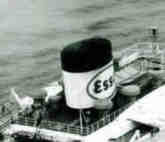 | OCEAN GOING TANKERS THAT CALLED ON ARUBA
|  |
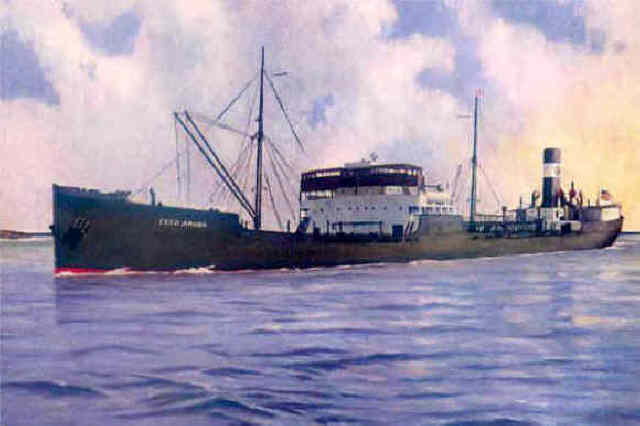 The Esso Aruba was built in 1931 by Swan, Hunter & Wigham Richardson, Ltd, in Wallsent, England for Pan American Petroleum & Transport Co.
The Esso Aruba was built in 1931 by Swan, Hunter & Wigham Richardson, Ltd, in Wallsent, England for Pan American Petroleum & Transport Co.
A single screw vessel of 15,145 deadweight tons capacity on international summer draft of 28 feet 8-7/8 inches and an overall length of 500 feet 7 inches and a breadth of 65 feet 3 inches. The cargo capacity was 107,569 barrels and she had a pumping rate of 4000 barrels per hour.
Her single triple expansion engine, equipped with exhaust turbine and supplied with steam by three Scotch boilers, developed 5,800 indicated horsepower and gave her a certified speed of 11.1 knots.
Ships of the Esso Fleet in World War II.
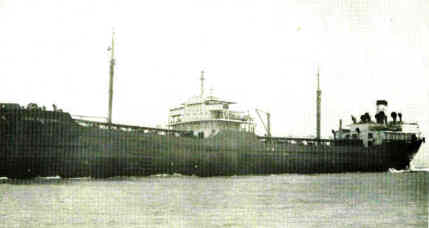
The Esso Bayonne was built in 1937 by the Federal Shipbuilders and Dry Dock Company of Kearny, New Jersey.
A single-screw vessel of 13,075 deadweight tons on a summer draft of 28 feet. She had an overall length of 450 feet, a breath of 60 feet with a cargo capacity of 105,415 Barrels and a pumping rate of 6,000 barrels an hour.
Her turbine engine, supplied with steam by two water-tube boilers developed 3,300 shaft horsepower with a certified speed of 12.7 knots.

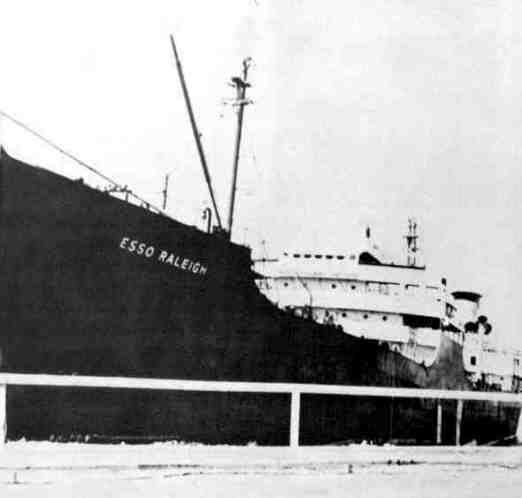
After the Lago refinery was purchased by Standard Oil of New Jersey a number of Esso tankers were assigned to run between New Jersey and Aruba to carry fuel to the United States and needed commodities to Aruba. These ships were: Esso Raleigh; Esso New Orleans; Esso Aruba; Esso Bolivar; F.W. Bedford, Jr. and the Peter Hurll.
Two of these ships, the Esso Raleigh and the Esso New Orleans were originally designed and built to serve as Aruba supply ships. These two were built with two refrigerator boxes, under the amidships house, with a combined capacity of 36 tons of frozen meats and produce. The ships were also fitted with additional winches to handle the unloading of cargo stowed in the forward hold and on deck.
Ships of the Esso Fleet in World War II
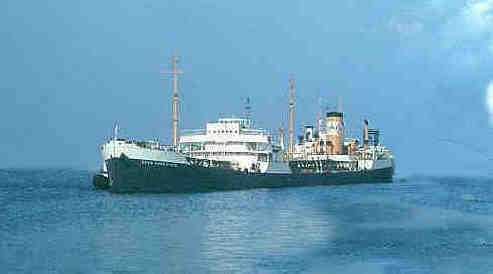
THE PHOTO ABOVE SHOWS A T2 TANKER, ALSO A ESSO TANKER, THAT IS FULLY LOADED, GETTING UNDERWAY OUT OF SAN NICHOLAS HARBOR, NOTE THE TUG BOAT AT THE BOW, ASSISTING IN THE DEPARTURE. THIS TANKER IS OF THE SAME CLASS AS THE ESSO BAYONNE. I AM UNABLE TO MAKE OUT THE NAME EVEN BY EXPANDING THE SIZE OF THE PHOTO.
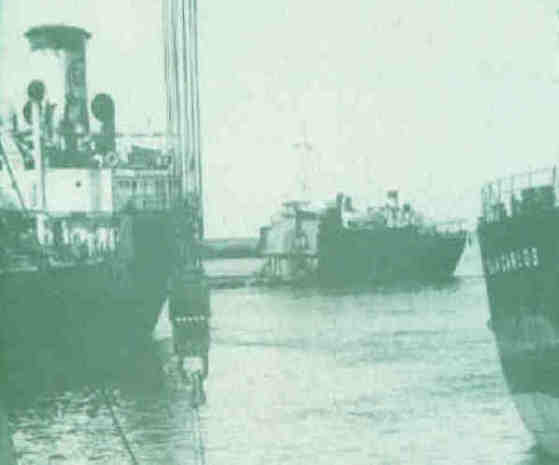
NOTICE THE TANKER (CENTER OF PHOTOGRAPH, BEHIND THE SHIP ON THE LEFT) LEAVING SAN NICHOLAS HARBOR, THIS TANKER IS ALSO LOADED AND NOTICE THE AMOUNT OF FREE BOARD THERE IS FROM THE DECK TO THE WATER.
ONCE YOU UNDERSTAND HOW LOW IN THE WATER A FULLY LOADED TANKER RIDES IT IS EASY TO UNDERSTAND HOW THE DECK CAN BECOME AWASH EVEN IN A MODERATE SEA. SEE THE PHOTOS BELOW.

.jpg)

NEWER CLASS OF TANKER FROM THE 1950's, NOTE THERE IS NO MID-SHIP SECTION ON THIS NEWER CLASS OF TANKER, ALL ACCOMMODATIONS ARE CONCENTRATED IN THE AFT OF THE SHIP, INCLUDING THE BRIDGE. ALSO NOTICE THE BOW, NOT QUITE A FULL BULBOUS BOW BUT A BEGINNING.
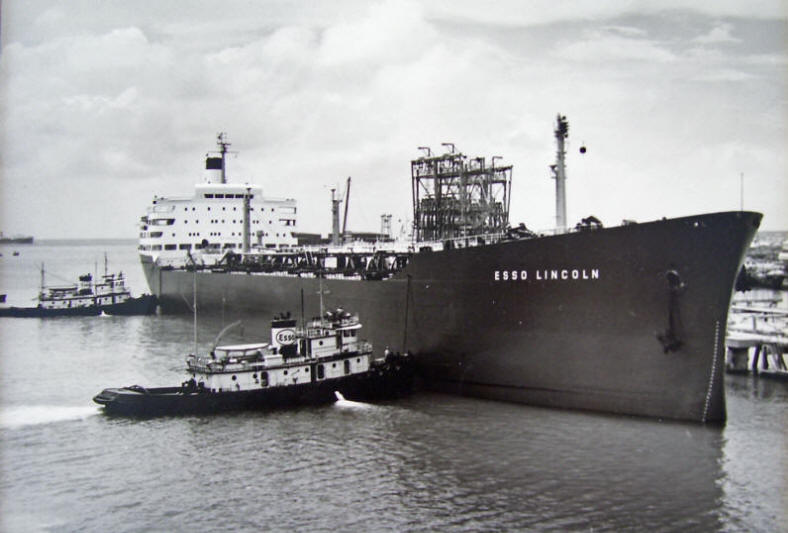
the 60īs in the UK. The launch was attended by the then Mayor of Lincoln, Bill Herbert, a work colleague of mine
at the time. Bryan McCall